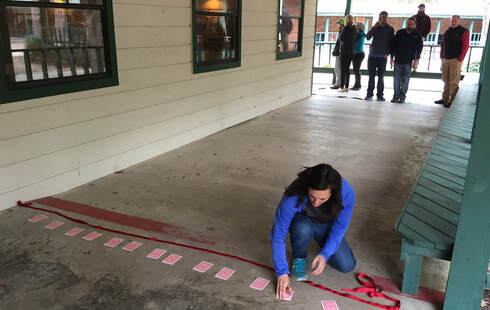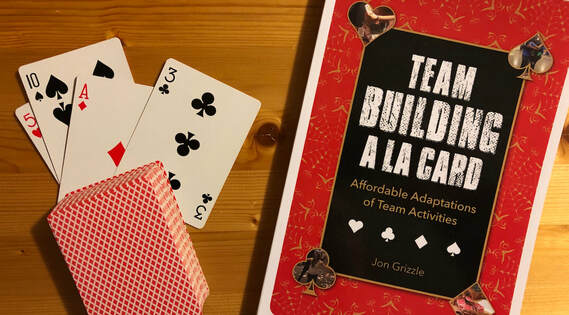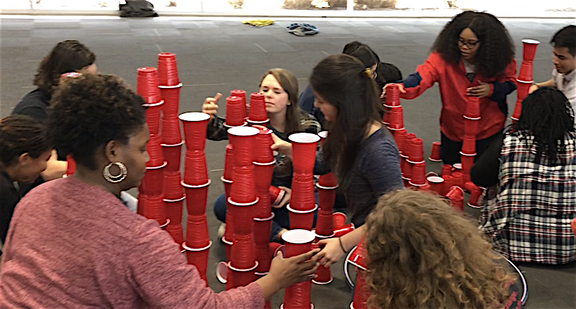In the video above, you will see the large group version of Flip and Find (small group version below). This large group was participating in a Team Olympics - there were about 60 players in the room. Points were awarded for the top three places. So, how does it play?
Establish a starting line (I suggest cones or masking tape. If you use a rope, players might trip on it.) We used Jumbo Playing Cards in the Olympics (video), but any cards will work. You need a suit of 13 cards for each group of 6 to 8 players. Mix up (shuffle) each suit and then set them down in a vertical line moving away from the starting line - the first card is about 10 feet from the starting line. The further the cards are apart, the more running involved (and the more challenging they are to see from behind the starting line - if teammates are watching/ helping).
The Objective:
Turn the cards over in sequence - starting with the King and ending with the Ace - as quickly, and safely as possible.
Directions:
- One person from each group can be in the "card field" at a time (over the starting line).
- One card can be turned over during each turn into the card field.
- If the card turned over is the first one (the King) or the next one in sequence (after the King), it can stay turned over - face up. The card must stay in the same place on the floor (or, ground).
- If the card is not the one in the sequence, it must be turned back over, face down in the same place on the floor.
- All players must take one true before any player takes a second turn. All players must take a second turn before anyone take a third turn, and so on.
- Players can talk to each other during the activity - they can help each other remember where certain cards are positioned.
- When the Ace (the final card) is turned over, the player to turn it over lifts the card into the air to signify completion of the task (jumping up and down is okay too!).
Depending how you play, there can be 1st, 2nd, and 3rd, or go by time - play two rounds and add time together for the overall place in the game.
Set Up: Depending on space, you can set the cards up vertically (like in the video) or horizontally (like in the picture). When I set them horizontally, the line of cards is about 20 feet from the starting line (the closer they are the easier the cards are to see - make it easy or more challenging depending on the group). Notice, there are two groups in the picture, one is playing down the other side of the porch. I set it up this way so the two group could collaborate.
The Objective:
Turn the cards over in sequence from King to Ace.
Directions: The activity plays the same (see directions above). However, in the small group version I give each group three attempts so they have the chance to improve on their process (and, hopefully share ideas with other groups in play). A super fast time comes down to creating roles and responsibilities and relying on each other for help.
Have FUN out there,
Chris Cavert, Ed.D.









 RSS Feed
RSS Feed